Abstract
A denitrifying Pseudomonas sp. (strain KC) capable of transforming carbon tetrachloride (CT) was isolated from groundwater aquifer solids. Major products of the transformation of 14C-labeled CT by Pseudomonas strain KC under denitrification conditions were 14CO2 and an unidentified water-soluble fraction. Little or no chloroform was produced. Addition of dissolved trace metals, notably, ferrous iron and cobalt, to the growth medium appeared to enhance growth of Pseudomonas strain KC while inhibiting transformation of CT. It is hypothesized that transformation of CT by this organism is associated with the mechanism of trace-metal scavenging.
Full text
PDF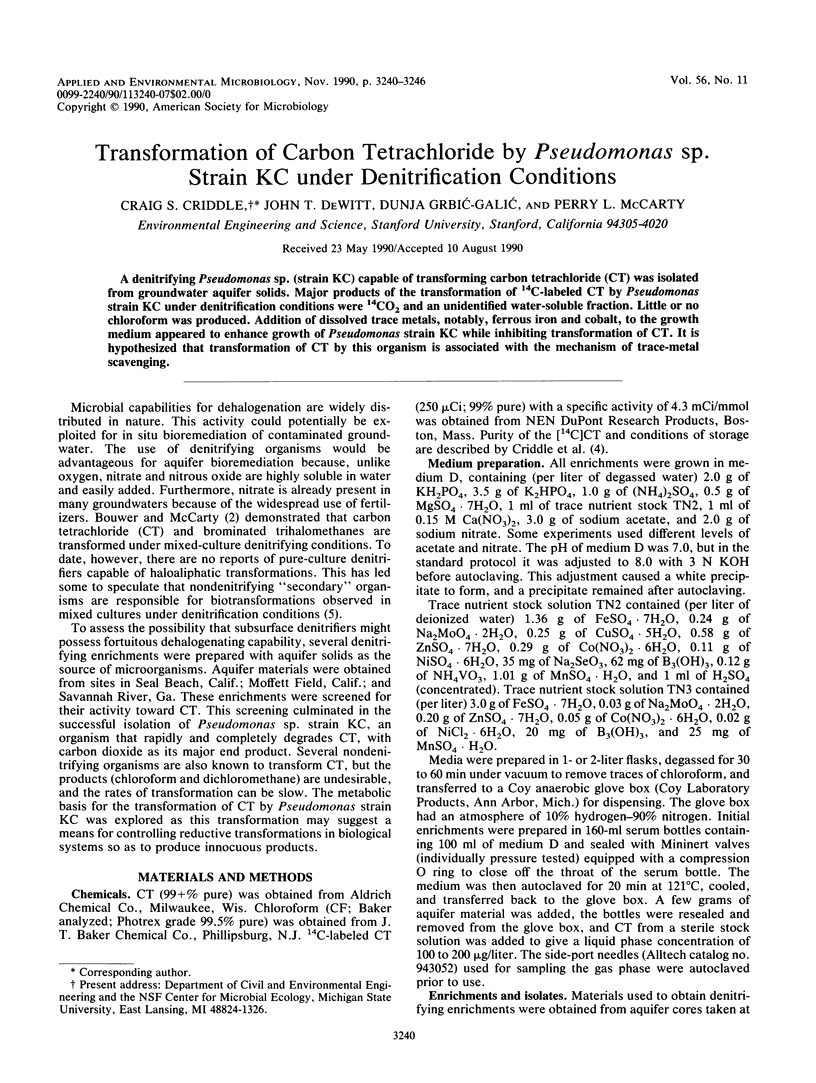
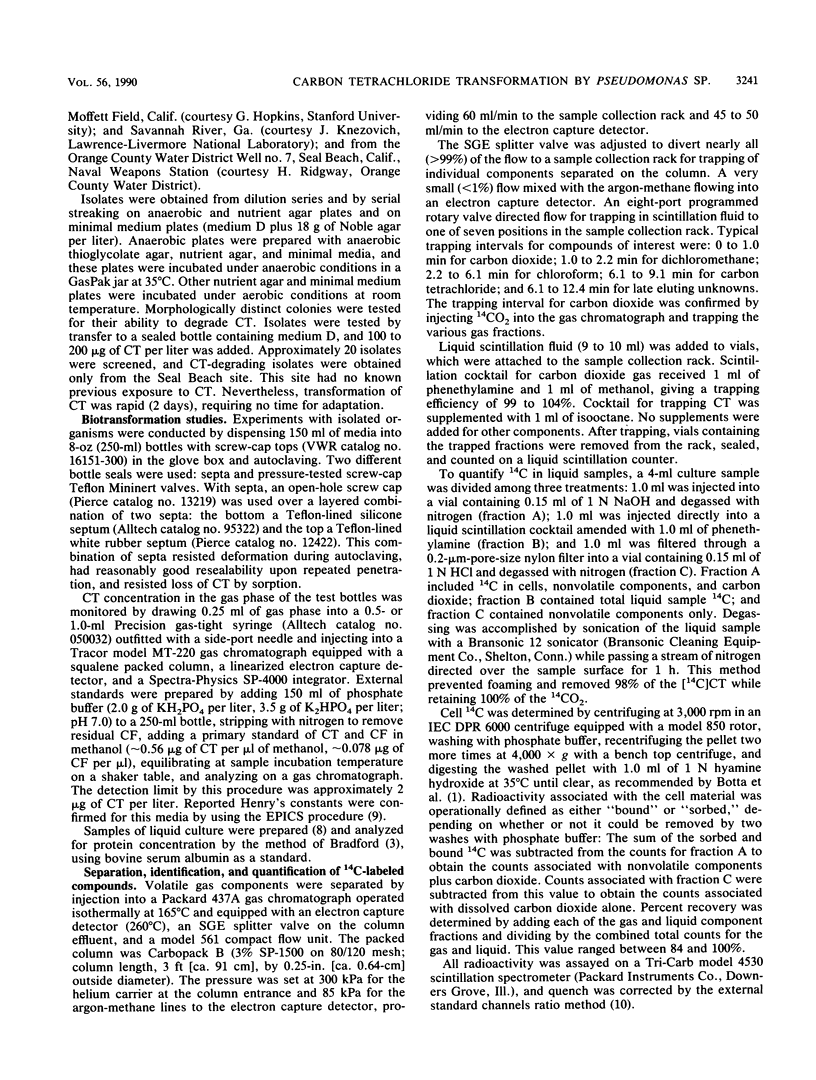
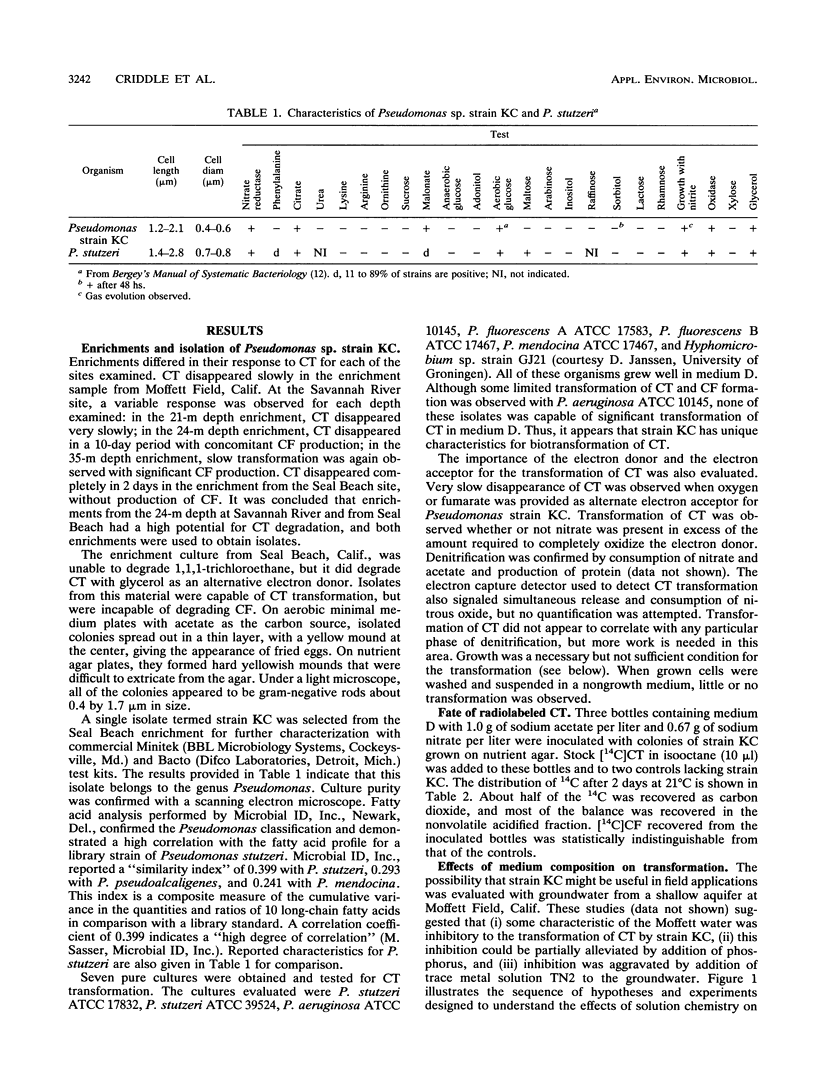
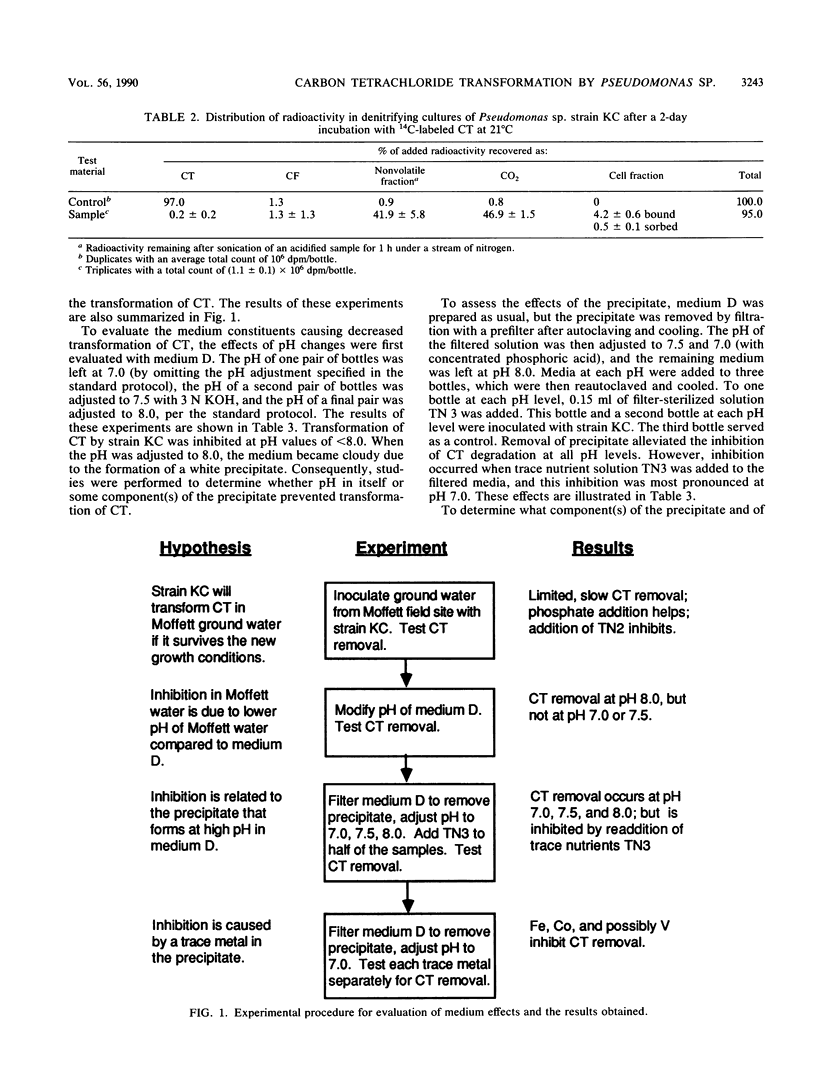
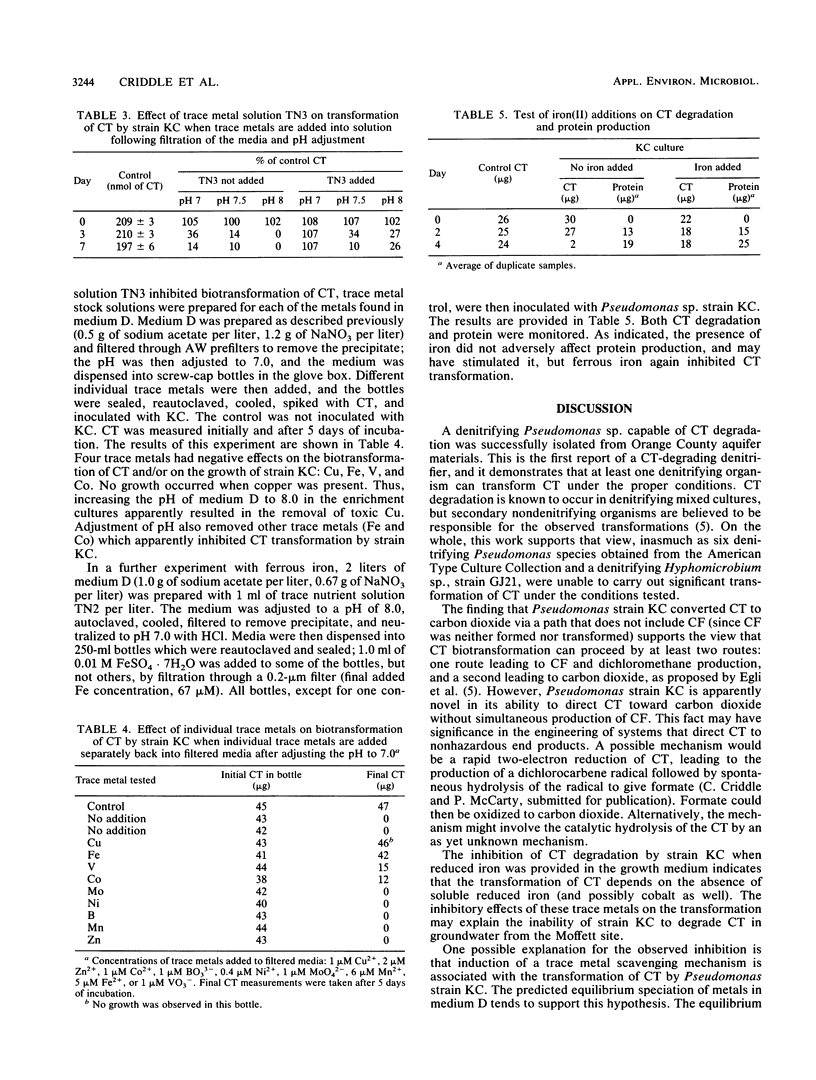
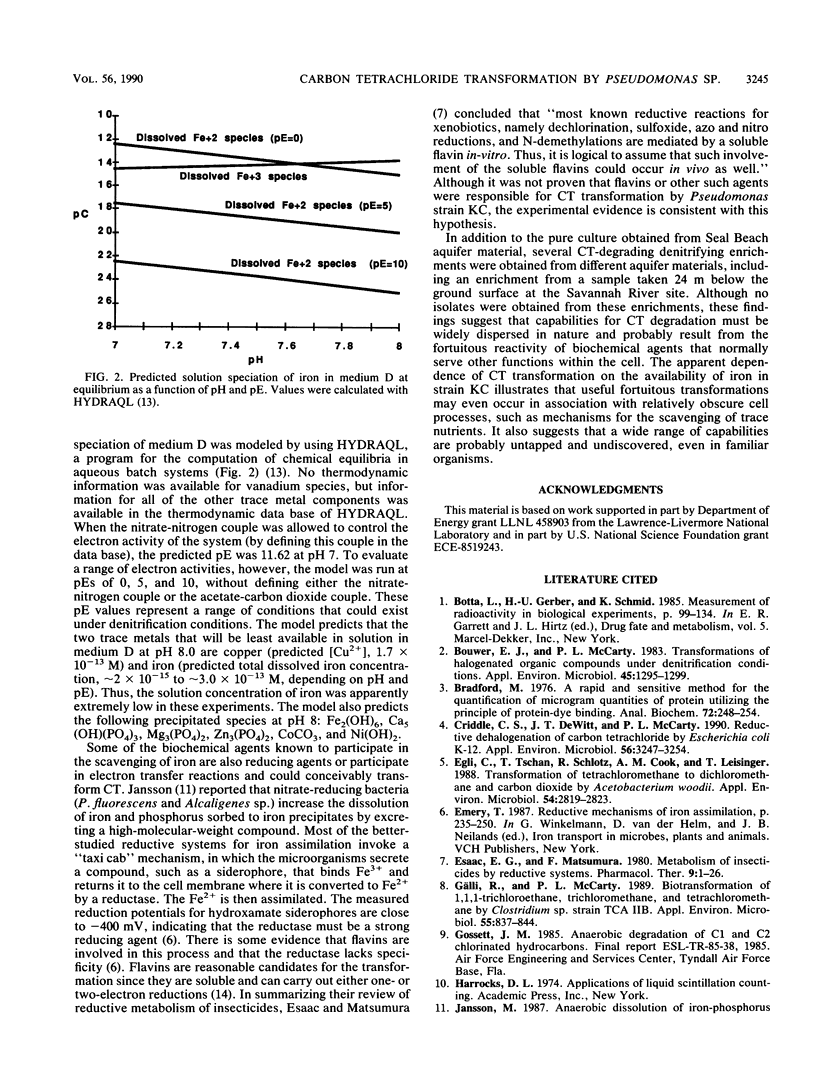
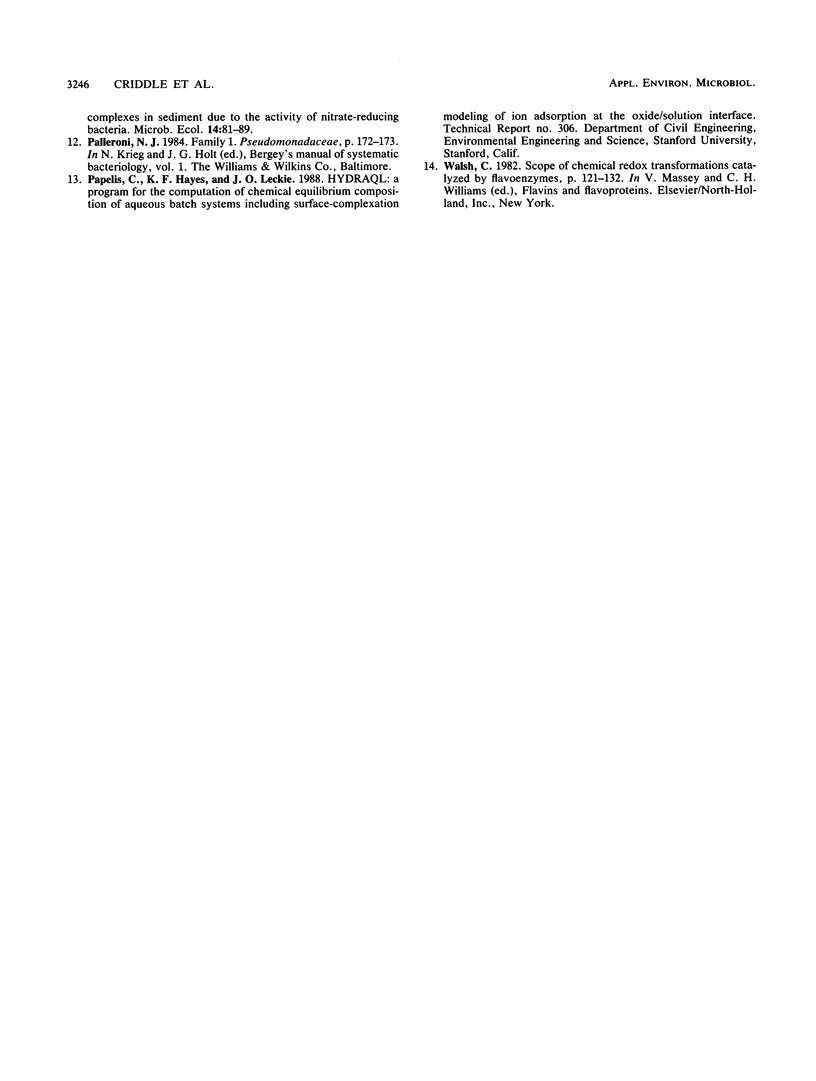
Selected References
These references are in PubMed. This may not be the complete list of references from this article.
- Bouwer E. J., McCarty P. L. Transformations of halogenated organic compounds under denitrification conditions. Appl Environ Microbiol. 1983 Apr;45(4):1295–1299. doi: 10.1128/aem.45.4.1295-1299.1983. [DOI] [PMC free article] [PubMed] [Google Scholar]
- Bradford M. M. A rapid and sensitive method for the quantitation of microgram quantities of protein utilizing the principle of protein-dye binding. Anal Biochem. 1976 May 7;72:248–254. doi: 10.1006/abio.1976.9999. [DOI] [PubMed] [Google Scholar]
- Criddle C. S., DeWitt J. T., McCarty P. L. Reductive dehalogenation of carbon tetrachloride by Escherichia coli K-12. Appl Environ Microbiol. 1990 Nov;56(11):3247–3254. doi: 10.1128/aem.56.11.3247-3254.1990. [DOI] [PMC free article] [PubMed] [Google Scholar]
- Egli C., Tschan T., Scholtz R., Cook A. M., Leisinger T. Transformation of tetrachloromethane to dichloromethane and carbon dioxide by Acetobacterium woodii. Appl Environ Microbiol. 1988 Nov;54(11):2819–2824. doi: 10.1128/aem.54.11.2819-2824.1988. [DOI] [PMC free article] [PubMed] [Google Scholar]
- Esaac E. G., Matsumura F. Metabolism of insecticides by reductive systems. Pharmacol Ther. 1980;9(1):1–26. doi: 10.1016/0163-7258(80)90014-5. [DOI] [PubMed] [Google Scholar]
- Gälli R., McCarty P. L. Biotransformation of 1,1,1-trichloroethane, trichloromethane, and tetrachloromethane by a Clostridium sp. Appl Environ Microbiol. 1989 Apr;55(4):837–844. doi: 10.1128/aem.55.4.837-844.1989. [DOI] [PMC free article] [PubMed] [Google Scholar]


